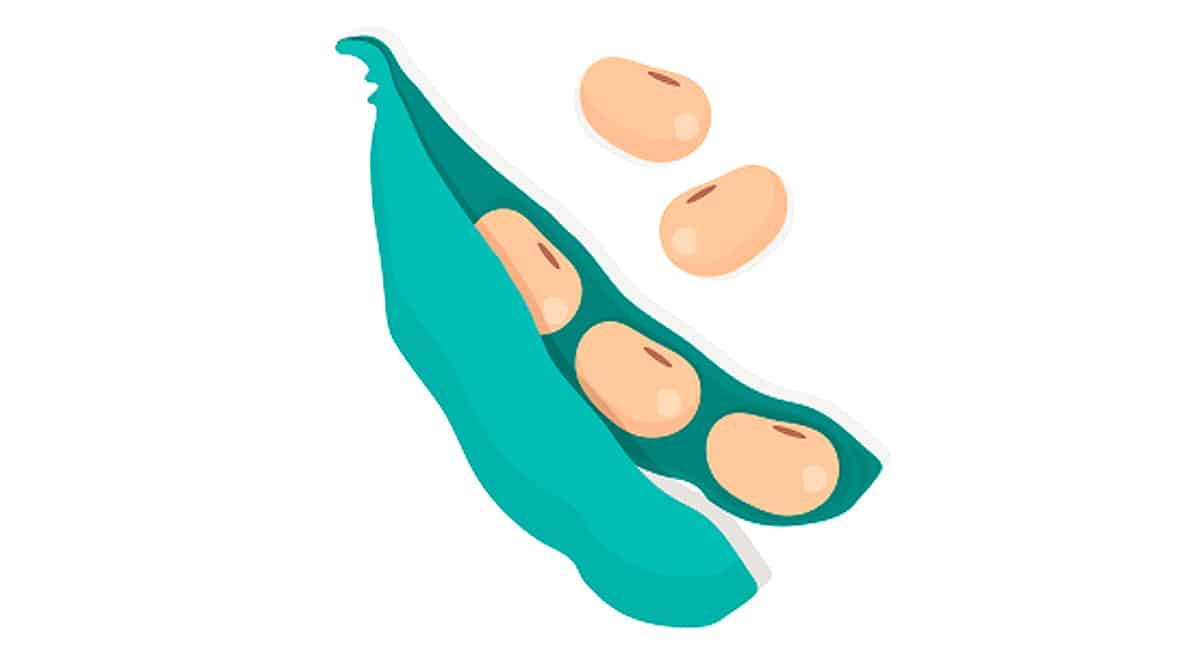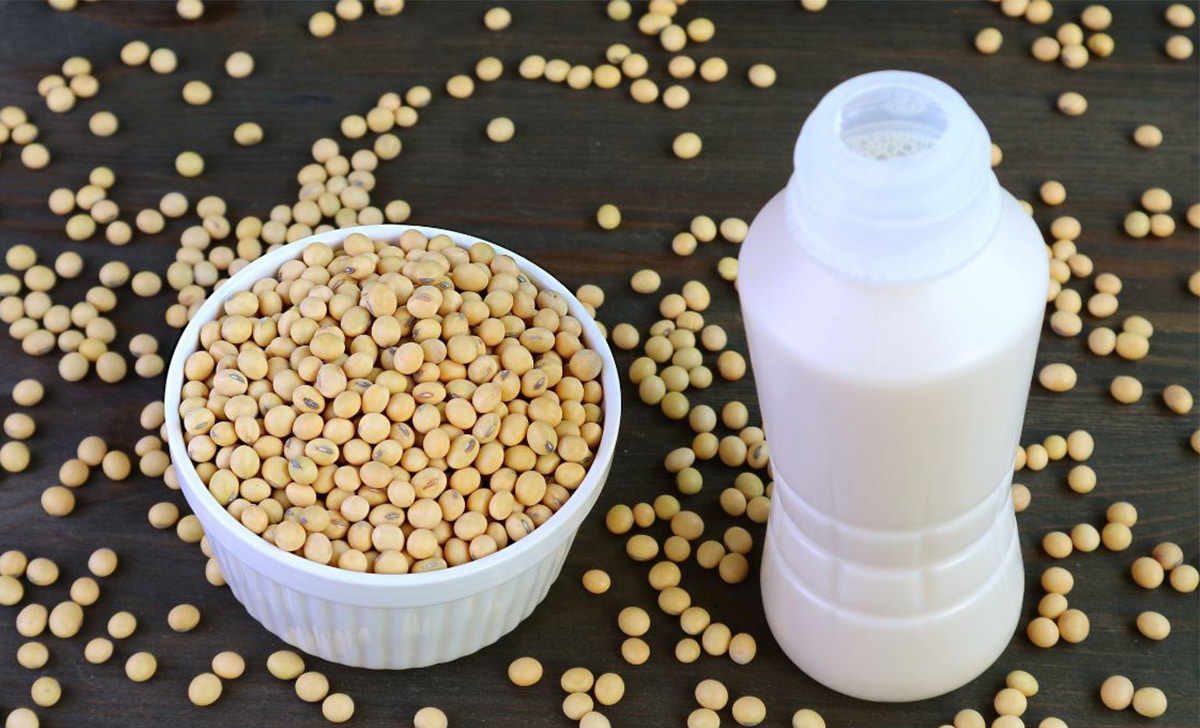
Soy is to food as plastic is to building materials: it’s cheap, it’s everywhere, and you can make it into just about anything you want. You can eat soy raw as a bean (edamame), pressed into tofu and stir-fried, blended into vegan “cheese,” flavored to look like bacon, hot dogs, burgers, or chicken nuggets, or dehydrated into a flour and baked into any number of cookies, energy bars, and high-protein cereals. If something is in a box on the shelf of a supermarket, there’s a decent chance it has at least some soy hiding in it somewhere.
For people who are still afraid of eating red meat and other animal protein, soy seems like the perfect alternative: high in protein, but without any of the supposedly “dangerous” saturated fat and cholesterol.
If you take a closer look at the supposed “health benefits,” though they start to fall apart. For one thing, the lack of saturated fat and cholesterol isn’t a benefit at all, since these are important nutrients and not dangerous artery-clogging toxins. Even the Dietary Guidelines Advisory Committee has finally figured out that cholesterol isn’t going to kill us.
Soy is also extremely high in Omega-6 fats – of all the fat in a soybean, about 61% is PUFA and almost all of that is Omega-6. Omega-6 fats aren’t “bad” in the abstract, but in high amounts and without enough Omega-3s, they’re inflammatory.
But a potential problem unique to soybeans is the presence of phytoestrogens. Phytoestrogens are typically touted as one of the biggest health benefits of soy, especially for women – apparently they do everything from preventing obesity to alleviating symptoms of menopause. If you take a closer look at the evidence, though, their health benefits start looking a little sparse, and the potential dangers start getting more and more significant.
What Are Phytoestrogens?
The word “phytoestrogen” is a combination of “phyto,” meaning “plant,” and “estrogen,” a sex hormone that your body naturally produces from testosterone. Phytoestrogens are plant-derived compounds that bind to estrogen receptors, so they mimic the action of estrogen in some ways (although they aren’t exactly the same; more on that in a minute).
There are many different types of phytoestrogens, but the only ones most people get in any significant amount from food are isoflavones, found in soy and soy products. The two most famous isoflavones are daidzein and genistein.
Foods That Contain Isoflavones (source)
- Defatted soy meal: 208.6mg total isoflavones/100 grams of food (100%)
- Soy protein isolate: 91.1mg (43%)
- Tempeh: 60.6mg (28%)
- Edamame (green soybeans; these are the ones you can buy in the freezer section): 49mg (23%)
- Cooked tofu: 31.4 (15%)
Other foods, like fruits and vegetables, do have some phytoestrogens, but the amounts are so incredibly tiny that you can basically ignore them. The real culprit here is soy – and all the processed foods that contain it.
Soy often gets praised for its health benefits precisely because it is so high in phytoestrogens: ask most people on the street and they’ll tell you that genistein is one of the healthiest things you could be eating. But from a Paleo perspective, they’re not so great.
The Problems With Phytoestrogens
So what’s actually wrong with eating phytoestrogens? This review explains some of the issues (any information in this section that isn’t otherwise cited comes form there). Briefly summed up:
- The “benefits” don’t actually help as advertised.
- The drawbacks are significant, if not fully researched.
Soy Phytoestrogens: They’re Not That Great
First of all, the supposed health benefits of phytoestrogens aren’t actually as great as the soy industry likes to claim:
- For symptoms of menopause, most clinical trials show little to no effect.
- For bone loss, trials have largely been inconclusive.
- For heart health, you can get a very tiny benefit from eating a very large amount of soy – not particularly impressive.
- For breast cancer, it’s not clear whether soy phytoestrogens increase risk, decrease risk, or have no effect.
For bodyweight and weight loss, it gets a little more complicated. It’s pretty clear that endogenous estrogen (that’s the kind you make yourself) is good for weight control in women. But remember from above that phytoestrogens aren’t actually identical to the estrogen your own body makes (to get really technical about it, you have two types of estrogen receptors, and the phytoestrogens prefer only one of them). In a variety of animal studies, dietary soy and/or phytoestrogen supplements have had varying effects on weight. But this study goes through all the actual human trials on soy or soy isoflavones for weight loss, and most of them showed no effect.
Soy Phytoestrogens: Potential Drawbacks.

So the health benefits of eating soy aren’t really everything they’ve cracked up to be. But it’s not just that they don’t have benefits. It’s that they’re actually harmful.
Technically, phytoestrogens are endocrine disruptors, or compounds that have some kind of undesirable effect on the structure and/or function of the endocrine system (that’s the name for the balance of all the hormones in your body). Other endocrine-disrupting chemicals that you might be familiar with include BPA, DDT, and PCBs.
Phytoestrogens bind to estrogen receptors even more easily than most of these synthetic endocrine disruptors. For example, this study found that a soy-rich diet could induce symptoms of PCOS (Polycystic Ovarian Syndrome, a hormonal disorder) in rats, even though BPA exposure had no effect. Soy foods can also amplify the effects of other endocrine-disrupting chemicals.
The obvious effects to look for are reproductive problems. In women, eating soy foods high in phytoestrogens reduces the levels of hormones that control the menstrual cycle, and increases menstrual cycle length. There’s also a pile of evidence that it does horrible things to rats, but human studies are pretty thin on the ground. The same goes for men: the studies we have in humans are not clear whether or not there is actually an effect of soy phytoestrogens on testosterone levels and the results in rats are conflicting. There’s some evidence that soy isn’t great for male fertility, but it’s hard to know for sure.
In rats, dietary soy can also alter mood and behavior in both male and female animals. This is probably thanks to the presence of estrogen receptors in the brain, and the relationship between estrogen and other mood-regulating hormones like oxytocin. It’s not clear how this effect plays out in humans, but there’s some evidence that soy phytoestrogens aren’t all sunshine and roses for cognitive health.
The effects of phytoestrogens are especially noticeable during early infancy, when the brain and reproductive system are rapidly developing. The obvious example is soy-based baby formula, which is fed to about a quarter of babies in the US. Soy formula is one of the most phytoestrogen-rich soy foods around, and babies who live on soy formula get a much higher dose of phytoestrogens than even a typical Asian soy-based diet would provide.
In rats, an equivalent exposure to phytoestrogens causes brain and reproductive abnormalities in both male and female rats. Human research is a little harder to come by and few studies have measured the long-term health effects of soy formula, but a few studies have shown that women fed soy formula as children had more menstrual pain and bled for longer than women fed a formula based on something else. The authors of the review also noted that even people eating a traditional, high-soy Asian diet breastfed their children, so babies were effectively protected against these effects – this might be one reason why they seem to be so healthy despite eating so much soy.
Summing it Up
It doesn’t make sense to worry about BPA but not worry about soy. As a source of endocrine-disrupting phytoestrogens, soy is actually more powerful, and we’re exposed to more of it.
The biggest problem with soy phytoestrogens and health is that there’s barely enough research to even start characterizing their effects – all the review papers cited here had at least one paragraph complaining about the lack of studies. Considering what we know about the reproductive dangers of endocrine disruptors in general though, and considering that soy can amplify the effects of other endocrine disruptors like BPA, it’s a safe bet that the effects aren’t all great, especially for babies.
Add the potential for serious reproductive damage to the disappointing lack of real health benefits for phytoestrogens, and it’s easy to see why soy is off the Paleo menu.





Leave a Reply